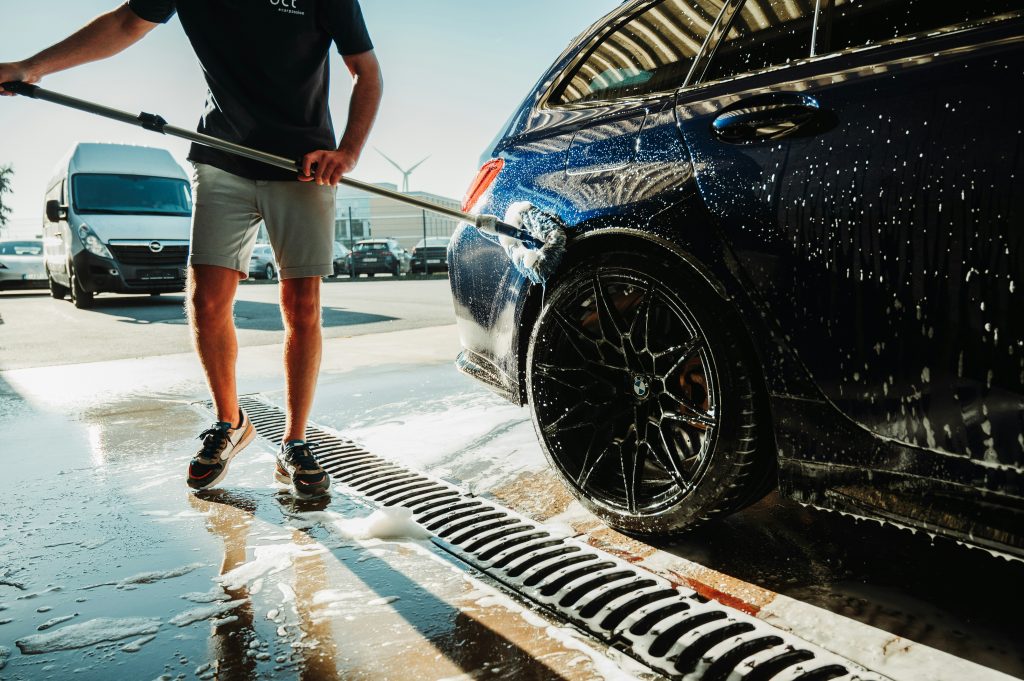Water Spots, Tree Sap & Bird Droppings: How to Remove Paint Killers Safely

Introduction
Your car's paint job is its first line of defense against the elements, but what happens when that defense is compromised by water spots, tree sap, or bird droppings? These common culprits can wreak havoc on your vehicle's exterior, leading to unsightly blemishes and potential long-term damage if not addressed promptly. In this blog, we will explore the impact of these paint killers, provide a step-by-step rescue guide for their removal, and discuss when to call in the professionals.
Section 1: Understanding the Damage
1.1 The Impact of Water Spots
Water spots form when mineral deposits from hard water evaporate, leaving behind unsightly marks on your car's paint. Common minerals include calcium, magnesium, and bicarbonates, which can create a chalky residue. If left untreated, these spots can lead to etching and permanent damage, diminishing your vehicle's appearance and value.
1.2 The Trouble with Tree Sap
Tree sap is a sticky substance that can bond with your car's paint, causing etching and discoloration. Trees such as pines, sweetgums, and maples are notorious for producing sap that can damage automotive finishes. If not removed quickly, sap can harden and become increasingly difficult to clean, leading to more severe paint damage.
1.3 The Dangers of Bird Droppings
Bird droppings contain uric acid, which is highly corrosive and can eat away at your car's paint if not cleaned promptly. The damage can begin within just a few hours, and prolonged exposure can lead to significant etching and discoloration. Statistics show that leaving droppings on your vehicle for more than 24 hours can result in permanent damage.
Section 2: Step-by-Step Rescue Guide
2.1 Preparing for the Cleaning Process
Before you start cleaning, gather the necessary supplies:
-
Soft microfiber cloths
-
Specialized cleaners (water spot remover, sap remover, etc.)
-
Plastic scraper for sap
-
Rubbing alcohol or hand sanitizer
-
A bucket of water
It's essential to work in a shaded area to prevent heat-related damage during the cleaning process.
2.2 Removing Water Spots
-
Rinse the affected area with water to remove loose debris.
-
Apply a specialized water spot remover according to the product instructions.
-
Gently buff the area with a soft cloth until the spots disappear.
-
To prevent future water spots, dry your car immediately after washing and consider using a wax or sealant.
2.3 Safely Removing Tree Sap
-
Use a plastic scraper to gently lift the sap from the paint surface.
-
Apply a dedicated sap remover or rubbing alcohol to a clean cloth and dab it on the sap.
-
Allow the solution to penetrate for a few moments, then wipe clean with a microfiber cloth.
-
Wash the area with soap and water to remove any residue, and dry thoroughly.
2.4 Cleaning Bird Droppings
-
Act quickly to minimize damage. If possible, soak the droppings with water to soften them.
-
Use a soft cloth to gently wipe away the droppings without scrubbing.
-
Rinse the area thoroughly with water to remove any remaining residue.
-
For added protection, consider applying a wax or sealant after cleaning.
Section 3: When to Call a Professional
3.1 Recognizing the Signs of Etching
Etching can manifest as small pits or depressions in the paint, discoloration, or a noticeable loss of gloss. If you observe these signs, it's crucial to assess the severity of the damage. If the etching is deep or extensive, professional intervention may be necessary.
3.2 Benefits of Professional Help
Professionals possess the expertise and specialized tools to handle delicate paint jobs effectively. They can assess the damage accurately and use advanced techniques to restore your vehicle's finish. Additionally, knowing that the job is done right can provide peace of mind.
Section 4: Preventative Measures
4.1 Regular Maintenance Tips
To keep your vehicle's paint in top condition, consider the following maintenance practices:
-
Wash your car every two weeks to remove dirt and contaminants.
-
Wax your vehicle every three to six months to provide a protective barrier.
-
Regularly inspect for scratches or chips and address them promptly.
4.2 Choosing the Right Parking Spots
To minimize exposure to tree sap and bird droppings, follow these tips:
-
Park away from trees known for sap production or bird activity.
-
Use covered parking whenever possible to shield your vehicle from the elements.
-
Consider using a car cover if parking outdoors for extended periods.
Conclusion
Addressing paint damage promptly is crucial for maintaining your vehicle's appearance and value. By taking proactive steps in cleaning and protecting your car's paint, you can prevent long-term damage from water spots, tree sap, and bird droppings. Remember to balance cleaning with the knowledge of when to seek professional help for more severe issues.

